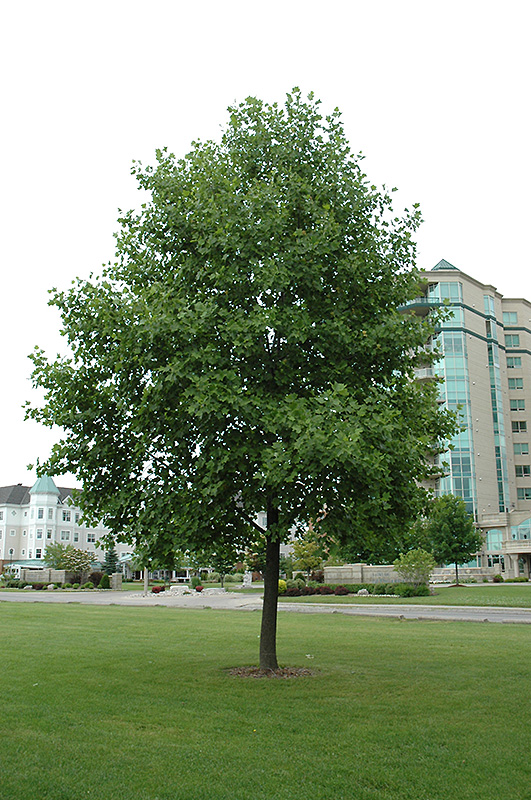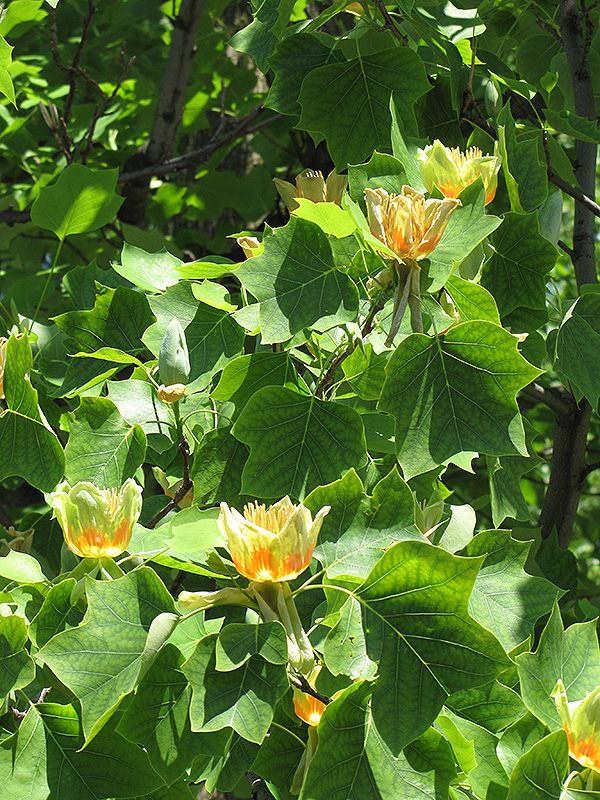Height: 60 feet Spread: 30 feet
Sunlight:
Hardiness Zone: 4b Other Names: Tulip Magnolia, Yellow Poplar, Whitewood Description: One of the tallest native trees of eastern North America, features uniquely shaped leaves and large yellow tulip-shaped flowers which are hard to see because of the height of the tree; needs lots of moisture and room to grow, not for small properties Ornamental Features Tuliptree has buttery yellow cup-shaped flowers with yellow eyes and orange centers held atop the branches from late spring to mid summer. It has emerald green deciduous foliage. The square leaves turn an outstanding gold in the fall. The furrowed gray bark is extremely showy and adds significant winter interest. Landscape Attributes Tuliptree is a deciduous tree with a strong central leader and a distinctive and refined pyramidal form. Its average texture blends into the landscape, but can be balanced by one or two finer or coarser trees or shrubs for an effective composition. This is a relatively low maintenance tree, and is best pruned in late winter once the threat of extreme cold has passed. Deer don't particularly care for this plant and will usually leave it alone in favor of tastier treats. It has no significant negative characteristics. Tuliptree is recommended for the following landscape applications; Planting & Growing Tuliptree will grow to be about 60 feet tall at maturity, with a spread of 30 feet. It has a high canopy of foliage that sits well above the ground, and should not be planted underneath power lines. As it matures, the lower branches of this tree can be strategically removed to create a high enough canopy to support unobstructed human traffic underneath. It grows at a medium rate, and under ideal conditions can be expected to live to a ripe old age of 120 years or more; think of this as a heritage tree for future generations! This tree should only be grown in full sunlight. It prefers to grow in average to moist conditions, and shouldn't be allowed to dry out. This plant should be periodically fertilized throughout the active growing season with a specially-formulated acidic fertilizer. It is not particular as to soil type or pH. It is quite intolerant of urban pollution, therefore inner city or urban streetside plantings are best avoided. This species is native to parts of North America, and parts of it are known to be toxic to humans and animals, so care should be exercised in planting it around children and pets. Special Attributes Tulip Trees (Liriodendron) seeds after blooming, the seeds are in a slender cone like pod. Wildlife eat the seeds during the winter. ![]()
![]()
![]()
![]()
![]()
![]()
![]()
![]()
![]()
![]()


